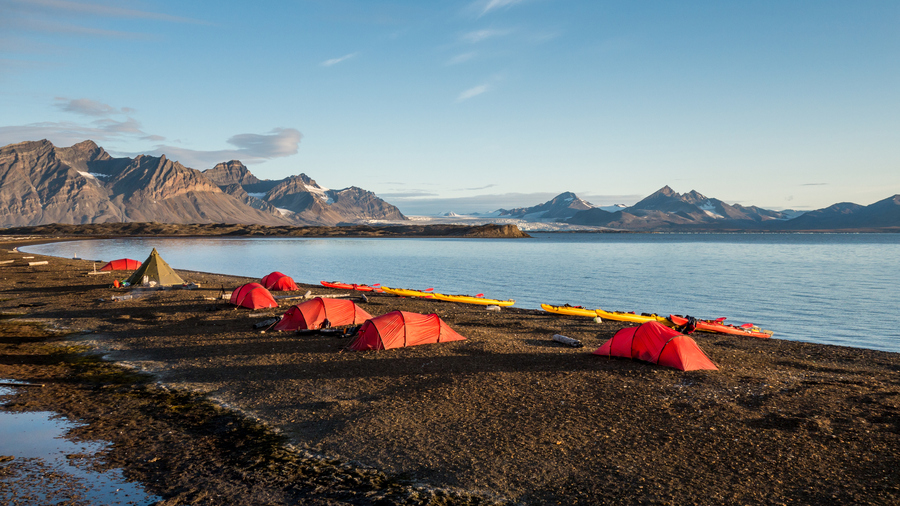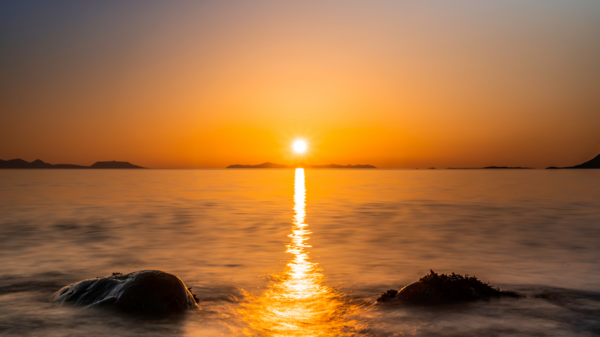
Each June, people across the Northern Hemisphere celebrate the solstice as a positive turning point: the start of summer, the longest day of the year, and sunlit evenings ahead. For many, especially people living in the Artic region, the light days and evenings are very welcome after a long and dark winter. But for some, this excess of light is not energizing—it’s exhausting.
The extreme version of bright summer nights is polar day, commonly referred to as the Midnight Sun, an extended period of daytime that lasts 24 hours or more. The phenomenon occurs in or near the Arctic and Antarctic regions during summer.
“It’s total daylight at all times. My body feels very stressed because there’s no natural way to turn it off.” Cecilia Blomdahl
ceciliablomdahl.com
Polar Night Can Actually Be Easier
Svalbard-based vlogger Cecilie Blomdahl knows what she’s talking about: too much daylight during polar day can be just as disorienting as months of darkness during Polar Night.
“When I compare the two, I really do think polar night is so much easier for me than 24-7 daylight,” Blomdahl says. She has lived in the Arctic for more than nine years, long enough to have tons of experience with both phenomena. In Svalbard, the midnight sun stretches from late April to late August.
She describes polar night—when the Sun doesn’t rise for months in Svalbard—as a time of natural rest: “Polar night is more than just no daylight. It’s the perfect time to rest and reset. It’s like our world is taking a deep breath, and we’re doing the same.”
What is the Equinox? And what is the Solstice?No Natural Way to Turn off the Light
Polar day, however, brings no such calm: “It’s total daylight at all times. My body feels very stressed because there’s no natural way to turn it off.”
If the Sun rises very early and sets very late, you may even experience jet lag without traveling. The entire Arctic region—the area enclosed by the Arctic Circle—is filled with the Midnight Sun. This includes parts of the US (Alaska), Canada, Greenland, Iceland, Norway, Finland, Sweden, and Russia.
“We go to bed with the Sun in the sky. And when we wake up, it’s still there,” Blomdahl says.
And it’s not just physical restlessness—prolonged exposure to light can also impact mental health in surprising ways.
Summer Sad: A Surprising Seasonal Disorder
You may have heard of Seasonal Affective Disorder (SAD)—seasonal mood changes typically associated with fatigue and depression during the dark months of winter. But a lesser-known part of it, summer-pattern SAD, can peak around the June solstice. Unlike its winter form, summer depression is believed to be triggered by increased sunlight.
The exact cause isn’t fully understood, but experts suggest that longer daylight hours, rising temperatures, and higher humidity may contribute. Common symptoms include insomnia, loss of appetite, agitation, and anxiety.
Some experts describe it as a feeling of being “stuck on high alert,” making it hard to get sufficient rest.
5 Tips to Fall Asleep When the Sun Won’t Set
Obviously, you can’t do much about the season or the amount of daylight. But you can take action to trick your brain into thinking it’s night and improve your sleep quality. Here are five sleep tips for your bedtime routine:
The Bright Side of the Solstice
Of course, not all solstice side effects are negative. Many enjoy the long, bright days during summer and feel energized during this season. Several places, people are in favour of permanent DST year-round, to get the benefit of lighter evenings all year.
Countless artists and musicians are creatively inspired during summer, from Shakespeare’s “A Midsummer Night’s Dream” to Nikolai Astrup’s “Bonfire celebrating Midsummer Night”, and “Summertime Sadness” by Lana Del Rey.
In the end, the solstice isn’t just an astronomical event — it’s an embodied human experience, felt in our sleep, our moods, and the shifting rhythms of our days.


